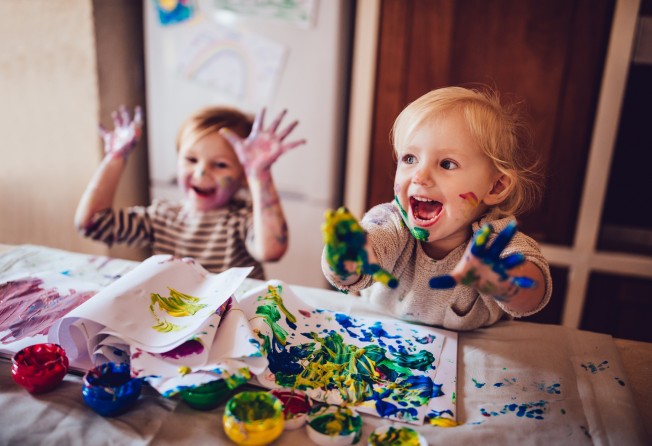Art for learning’s sake teaches children to flourish
- Creativity has a vital role to play in boosting self-confidence and developing the innovation, communication and motivation skills essential to success

This month, LinkedIn analysed thousands of job listings and surveyed senior leaders to determine what vital skills are in demand for today’s workplace. The emphasis has shifted to the things that people can do but technology cannot. While interpersonal skills such as collaboration and persuasion continue to be highly rated, the top spot was taken by creativity.
Art education has an uplifting effect on academic success and student wellness. Research in the United States has shown the impressive impact that art in education has on a range of subjects, including maths, science, reading and writing. Art in education strengthens students’ ability to innovate, self-motivate, and improve self-confidence and communication and cooperation with others.
In Hong Kong, art is often downgraded to an extracurricular pursuit, with its benefits all but lost to young minds.
But as the workplace changes, so the goals and methods of education also need also to evolve. Schools must do more than equip the next generation with the ability to memorise, analyse and compute. As an art therapist working in Hong Kong, I believe that the arts have a crucial role to play in providing children with key skills for life and the workplace.
I remember a sceptical parent – a successful lawyer – who told me that art was unnecessary. This parent was satisfied that their child was excelling at maths and Chinese. But the boy was referred to me because he lacked essential skills in mood regulation and anger management, and demonstrated developmental delays in fine motor skills and hand-eye coordination. Handling different art materials soon improved the latter, while exploring feelings through art helped develop his emotional regulation skills.
Art offers more than meets the eye. Creating art is a pleasurable activity for children of all ages. For younger children, art making is a playful way to efficiently master required motor skills as well as to practise listening skills and follow directions. Importantly, as children gain abilities, their sense of self-esteem and confidence grows.
Through engagement in art observational skills are refined, attention to detail is honed, and children learn to consider different perspectives, evaluate choices and make decisions. Furthermore, engaging in art encompasses visual as well as verbal aspects, thus supporting healthy neurodevelopment, and increasing connectivity of both halves of the brain.
The formal artistic process teaches problem-solving skills because it compels children to organise their ideas in a series of steps. Initially, they must plan and select materials, then create, review and, finally, exhibit. Working within the boundaries of the process, students are learning to delay gratification, work within limits, innovate and ultimately integrate the discomforts that come with constructive struggle. After completion, the emphasis is on receiving feedback and subsequent reflection; this fosters important life skills and promotes resilience.
On a psychological level, there are three aspects to engagement with art that are worth noting. First, art is an active, not a passive endeavour and through this active participation, it promotes a sense of agency, freedom and control.
Next, art has is the ability to generate the experience of flow, a term denoting a positive state in which a person is fully immersed in an activity. In this regard art is a mindful activity that serves to support self-regulation and the management of emotion, and helps practise the sustaining of focus.
Finally, as part of the process of individuation, art can serve as a productive outlet to express and integrate emotions.
Can today’s education really afford to ignore these benefits? It seems narrow-minded to concentrate on left-brain, measurable subjects. As a society, we run the risk of not fully developing the more intangible but uniquely human qualities inherent in art and creativity, that contribute to being a balanced person and are skills that machines have yet to fully emulate.
It is time for education in Hong Kong to pledge a more central and integrated role for the arts, innovation and creativity to do our children justice and ensure they are optimally equipped for a changing future.